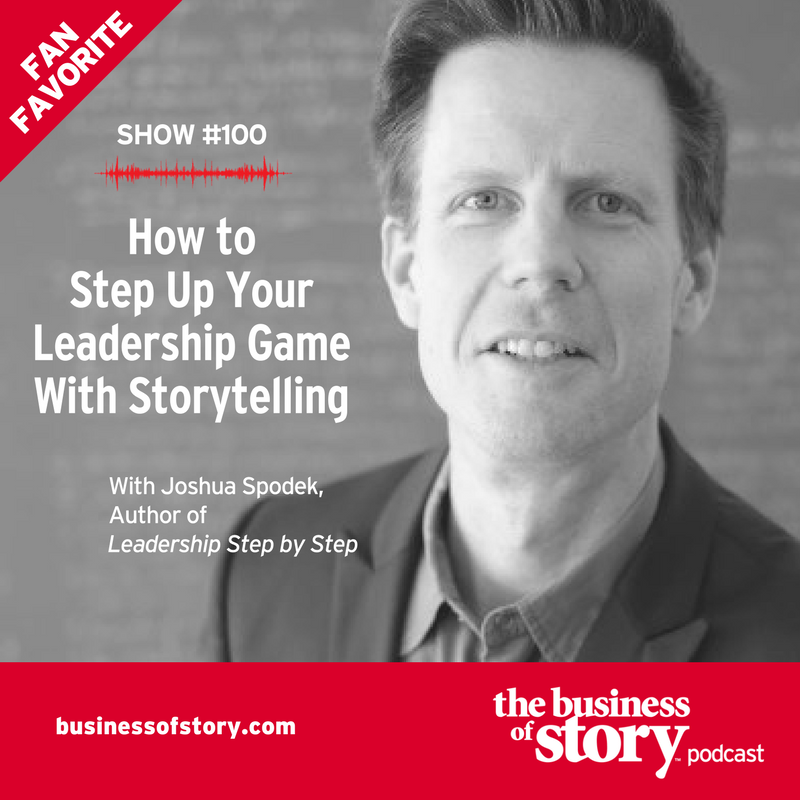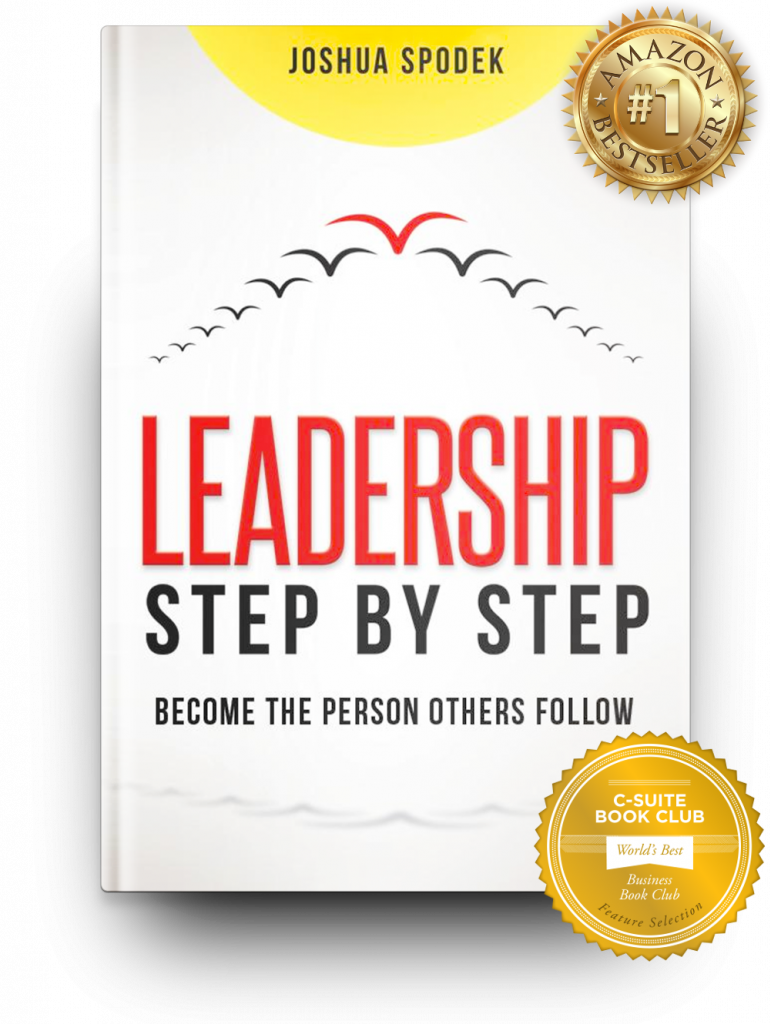Business storytelling is about more than just engaging and captivating
You want to help your customers, employees, and other stakeholders. You want to tell stories to influence, motivate, and lead. Effective leadership depends more on knowing the other person’s motivations than yours. Aspiring leaders who miss this point try to coerce more than inspire.
The difference when you lead
Since I teach leadership, people often ask if anyone can lead. I point out Oprah Winfrey as a great, effective leader—her mentioning a book can sell millions of copies. George Patton was also a great, effective leader. His men followed him into battle to historic victories. As effectively as Oprah leads, I don’t see her commanding soldiers in battle. Likewise, I doubt Patton would last long hosting talk shows.
Anyone can lead, but not in any situation. Oprah and Patton led people they understood and cared about.
Likewise in leading with stories. To lead, you can’t stop at captivating. You have to learn what motivates your followers—ideally to feel what they feel. That’s empathy.
How do you find out what motivates them? You can start by asking, but asking alone won’t help since sharing motivations makes people feel vulnerable. I’ve found it essential to show through your behavior that you will support them.
I developed the Meaningful Connection exercise to teach supportive behavior so people feel comfortable sharing their interests. It consistently leads to meaningful, open conversations.
It comes as a script. As with athletic exercises, the more you practice it by the book, the more you learn its skills and why they work. After a dozen practices, your authentic voice will emerge.
Here is the exercise, excerpted from my book, Leadership Step by Step.
Notice how the example reveals that connecting stories to discipline or solitude would connect with me deeply. Even writing about those topics now makes me interested.
Everyone has topics that are especially meaningful for them. Learn them and connect your stories to that listener’s topics and your stories will inspire.
The Meaningful Connection exercise
Meaningful Connection is useful in networking, job interviews, social events, and any team context. I use it weekly or more, sometimes several times a day. It’s not the only way to create a meaningful connection, but it works. Practicing it reveals its underlying structure and skills that you’ll use in meeting and leading others. It’s also the foundation for all the exercises in Unit 4, Leading Others.
You can do Meaningful Connection in a few minutes or, with practice, you can extend it to full conversations. You can do it once or you can do it two or three times in a row. You can do it with people you know well or just met, with friends, family, coworkers, classmates, etc. You don’t have to tell people you’re doing an exercise.
What to do
Practice the script below at least a dozen times one way (you do the odd steps) and a few times the other (they do the odd steps). In university, I assign students to do it twice a day for a week.
The first few times you do it will take a lot of concentration, especially thinking of two people for step 3 and remembering the words in step 4 to use in step 5, but gets easier within a few tries. Even Meryl Streep has to learn and practice her lines. Unlike her, you don’t have to create a character with a fictional backstory. You only have to be you. You can show people the script while you do it the first time if it helps.
The script
- Ask their passion, or what they like to do, besides work and family.
- They will reply with something still fairly usual: travel, books, food, etc.
- Say “Cool… you know, I know <someone you know> who <does X> for <their reason> and I know <someone else> who <does X> for <their reason>. Why do you <do X>?”
- Their response will include two or three words that are unusual or stressed.
- Respond to clarify what they said using those two or three words in your response.
You don’t have to make time to do the exercise, since you can do it in regular conversation, with people you’ve just met, people you’ve known a long time, and everyone between.
Example
Someone doing Meaningful Connection with me might create a conversation like this:
Person: “Hey Josh. If you don’t mind my asking, what’s a passion of yours, besides work and family?”
Me: “Hmm… I like running marathons.”
Person: “Cool… You know, I know a few people who exercise a lot. My brother runs a lot. I think he does it since he loved running track in school and likes to keep up the habit with a track club. My coworker works with a trainer at her gym. I think she mainly does it to keep in shape. Why do you run marathons?”
Me: “It’s not really those things, though I did do sports in school. And I’m not sure running marathons is actually that healthy. For me it’s more about discipline, since running far is so hard. I don’t run with a group. There’s something about the solitude I like, learning about myself.”
Person, having noticed the word ‘discipline’: “So it’s more about discipline?”
Me: “Yeah. Like after running up a big hill in ninety-degree weather sixteen miles in, dealing with difficult people in the rest of life isn’t so hard…”
[I could talk a lot about the discipline I’ve developed from exercise, especially endurance sports. Even writing right now, I want to. After I did, the other person might continue…]
Person, having noticed the word ‘solitude’: “So there’s something about running in solitude that you like?”
Me: “Yeah, running takes almost no equipment. Just shoes and clothes and I can run in Central Park or by the Hudson River and not have to worry about anything else for a while…”
Discussion
 Some people consider “So what do you do?” a standard way to start a conversation. I find it distracts from more meaningful topics. Same with weather, sports, where they’re from, current events, traffic on the way over, how many siblings someone has, and the other topics people fall back on.
Some people consider “So what do you do?” a standard way to start a conversation. I find it distracts from more meaningful topics. Same with weather, sports, where they’re from, current events, traffic on the way over, how many siblings someone has, and the other topics people fall back on.
Those questions aren’t bad. They just create little intimacy or meaning. They’re standard because they prevent sharing or exposing vulnerabilities. The problem with avoiding vulnerabilities is that we’re vulnerable about things we care about, so this strategy also avoids what we care about.
I suggest saying “… besides work and family” not because people don’t care about them but because they tend to get stock answers, again to avoid vulnerabilities.
People also fall back on standard questions because they don’t have alternatives that work, which this exercise gives.
Sharing about passions make people vulnerable to judgment. Saying you won’t judge isn’t credible because people who do also say they won’t. This exercise shows that you won’t judge through your behavior, which is more credible than words, which gives them space to open up. The script keeps you from talking over them, judging them, interviewing them, or falling into mundane conversation.
Meaningful Connection makes the other person feel comfortable sharing something they care about. Most likely in step 2 they give a cocktail-party answer—a protective facade hiding a deeper passion. You connecting their answer to people in your life in step 3 supports them, which leads them to expand.
People want to talk about their passions. In fact, they love to, just not when they suspect the other person might judge or hurt them with what they share.
I recommend first practicing with people you know well to practice the two hard parts—connecting to people you know and their motivations in step 3 and to listen for their meaning-carrying words in step 4. I also recommend following the script until you master it, which usually takes about ten trials.
You have the rest of your life to add flourishes and improvise. Playing do-re-mi-fa-so-la-ti-do will teach you scales, not do-fa-re-mi-ti-la-so-do. The goal of the exercise is not for you to do it the same way forever, but to master the basics so you don’t have to think about them.
Then your natural voice will emerge.
Listen to Joshua Spodek on episode #82: How to Focus Your Story to Grow Your Business








